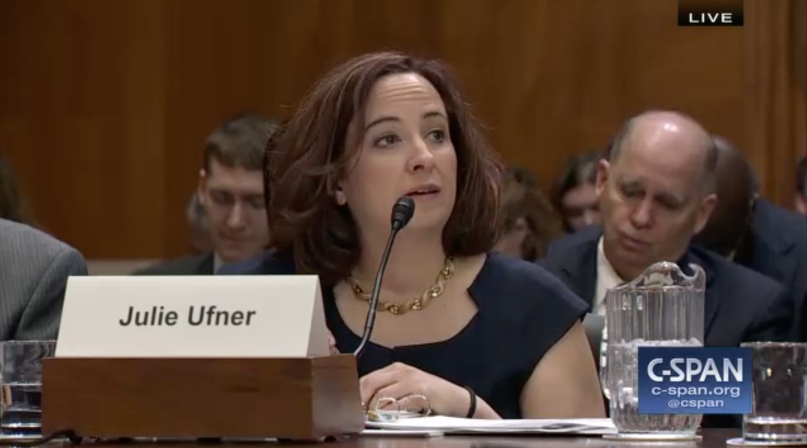NACo talks water issues before Senate Committee
Upcoming Events
Related News

NACo asks Senate for framework for meaningful consultation between Army Corps of Engineers and state and local governments on pending rules and policies that directly impact them
In testimony before the Senate Environment and Public Works Committee Jan. 10, NACo Associate Legislative Director Julie Ufner discussed the central role counties play in strengthening America’s water infrastructure and how the Water Resources Development Act (WRDA) can help by fostering collaboration on water projects between local governments and the U.S. Army Corps of Engineers (Army Corps).
Specifically, the testimony highlighted four key points:
- Water infrastructure is integral to counties’ ability to protect public safety and grow our economies.
- Throughout the West, counties face unique water challenges.
- WRDA helps local communities help themselves.
- To build upon past successes and address current challenges, there are a number of ways that Congress can improve and strengthen WRDA to help western counties.
Learn More
To view Ufner’s testimony, go to “America’s Water Infrastructure Needs and Challenges”
To read Ufner’s written statement click here.
Ufner shared several examples of how WRDA and the Army Corps can help support local economies. Juneau, Alaska, for one, relies heavily on its port to support the tourism, mining and fishing industries that drive the local economy and contribute $2.6 billion each year to the GDP. Park County, Wyo. is currently working with the Army Corps to replace roads and bridges damaged by mountain flooding and ice jams in its local waterways. These roads and bridges provide access to federal public lands and are crucial for the county’s economic stability.
Ufner also underscored the many challenges counties face in protecting the safety and reliability of the country’s aging water infrastructure. Their resources are constrained by increased project costs, federal regulatory barriers and, especially in Western counties, high elevations, arid landscapes and strong population growth that puts further stress on an already limited supply of water.
Ufner made a strong pitch for Congress to provide a framework for meaningful consultation between the Army Corps and its state and local governments on pending rules and policies that directly impact them.
“We believe this will solve many of the conflicts that exist now between the Army Corps and its intergovernmental partners.”
Historically, WRDA bills authorize water resource projects and policies for navigation, flood control, hydropower, recreation, water supply and emergency management for the U.S Army Corps of Engineers. The legislation is often passed on a biennial basis and tends to address county interests related to ports and harbors, inland waterways, levees, dams, beach replenishment, ecosystem restoration and other water projects.
Only three WRDA bills — WRDA 2007, the Water Resources Reform and Development Act of 2014 (WRRDA) and the Water Infrastructure Improvements for the Nation Act of 2016 (WIIN) — have been enacted in the past decade.
Julie Ufner, associate legislative director, and Austin Igleheart, legislative associate, contributed to this report.
Attachments
Related News

U.S. House of Representatives passes SPEED Act and other permitting reform bills
On December 18, the U.S. House of Representatives passed the SPEED Act (H.R. 4776). The SPEED Act would strengthen county involvement in decision-making and make needed commonsense reforms to the federal environmental review process.

House Natural Resources Committee advances the Endangered Species Act Amendments Act of 2025
On December 17, the House Natural Resources Committee advanced the Endangered Species Act (ESA) Amendments Act of 2025 (H.R. 1897). The version passed by the committee adopted several changes from the initial bill and would address key county concerns by improving the implementation of the ESA. The legislation now awaits a floor vote before the whole U.S. House of Representatives.

Senators introduce bipartisan UPGRADE Act to support small and rural public water systems
On December 15, Sens. Lisa Blunt Rochester (D-Del.) and Roger Wicker (R-Miss.) introduced the Unincorporated Partnerships for Grant Resources, Assistance, and Drinking Water Enhancements (UPGRADE) Act (S. 3465), a bipartisan bill that would strengthen federal support for small public water systems and helps unincorporated communities access clean and affordable water.